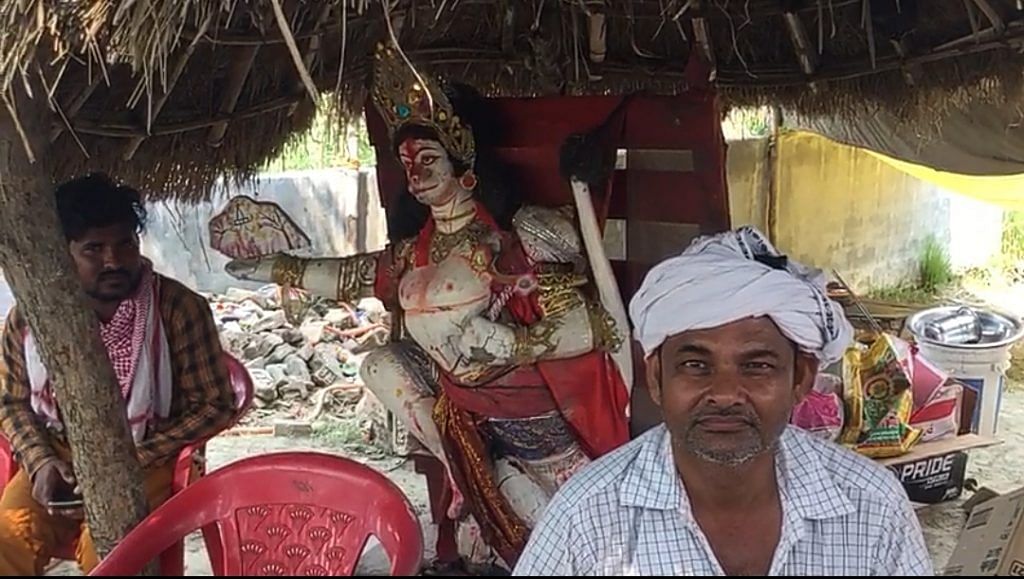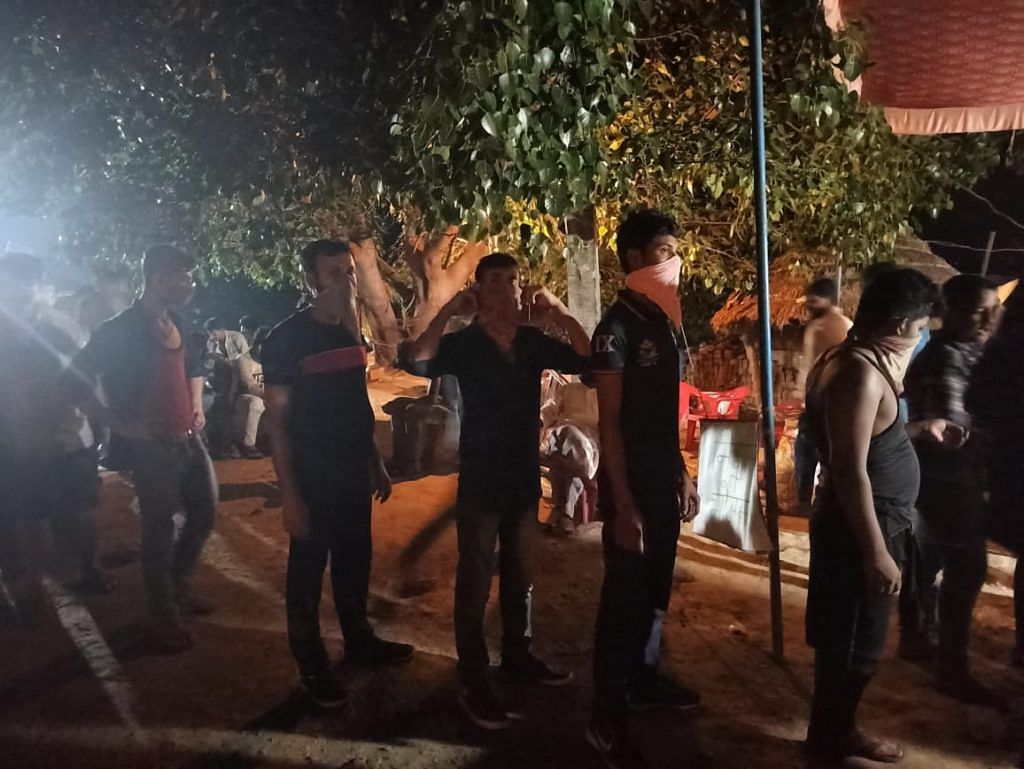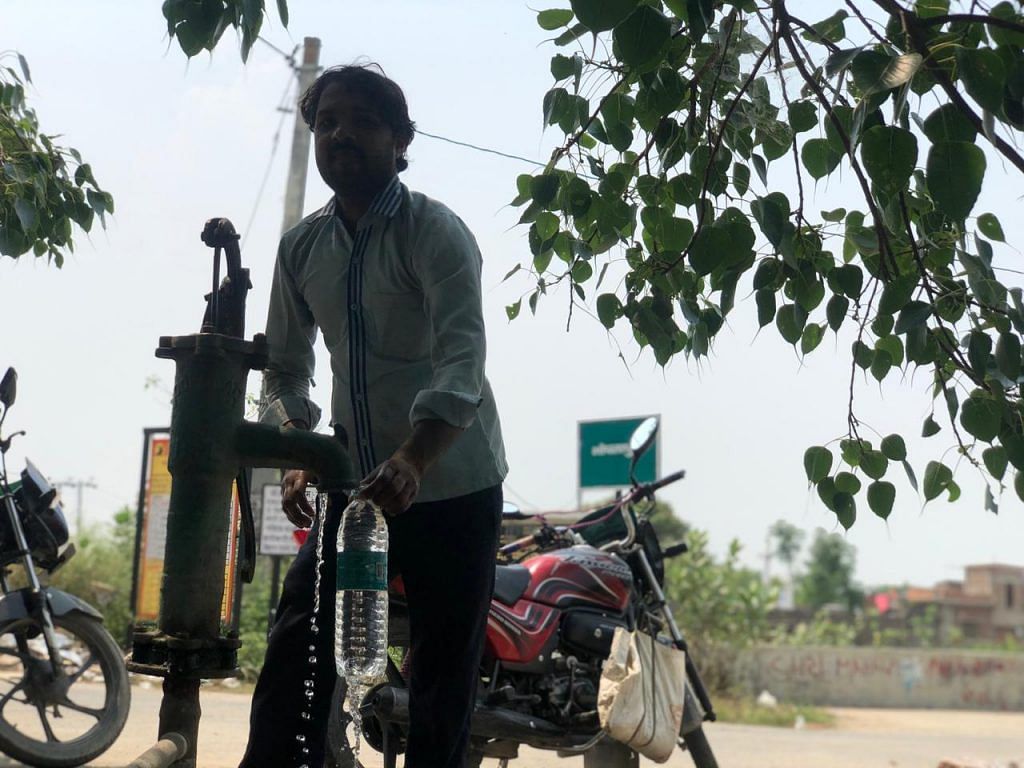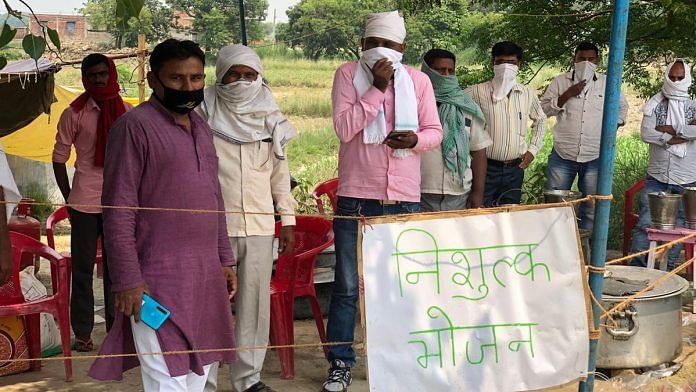Gopalganj: Bihar has witnessed a massive influx of migrant workers from across the country after the nationwide lockdown.
As these workers journey on to their native villages, often on foot, the residents of the remote Bhopata Par village on the Uttar Pradesh-Bihar border are trying to ensure that they are not left hungry.
The villagers have started a small roadside community kitchen just off National Highway 27 to feed the migrant workers.
Umesh Yadav, a teacher by profession, started the initiative with a group of five to six people, three weeks ago. Now, as many as 60 people work together to feed these migrant workers.

According to Mohammad Mansoor, a social worker in the village, some days they could feed as many as 10,000 people.
“Between 11-16 May, we fed as many as 8,000-10,000 people daily and the estimated cost was somewhere between Rs 20,000-30000. At that time, the number of stranded migrant workers was high as they were being dropped off at the UP-Bihar border, which has now reduced after passes have started being issued at the Balthari (Gopalganj) check post,” Mansoor told ThePrint.
“The number of migrant labourers, we feed, has reduced to 2,000-3,000 since 17 May as they have started taking direct buses to their native villages, since passes are quickly getting issued now,” Mansoor added.
Also read: 9-month pregnant woman travels 900 km from UP to Bihar, then made to wait hours for delivery
Collaborative effort of Hindus and Muslims
The population of the village is comprised of 70 per cent Hindus and 30 per cent Muslims, and the community kitchen is a collaborative effort between the two communities.
“The plight of these migrant workers was too much to bear, so we started this initiative. People from both the communities have joined hands to show the world that humanity comes first,” Yadav told ThePrint.
“The cooking continues throughout the day and night in batches. However, since the influx is more at night, we only take a break of an hour between 1-2 am, and again resume at 3 am,” Yadav added.
After Yadav began this initiative, the Muslims from the village got in touch with him to collaborate. The schedule for cooking and distribution of meals is divided among the volunteers keeping in mind sehri and iftar.
“Ramzan is the month of barkat, in the name of Allah, we are trying to feed as many people as we can. We are thankful to Umeshji for starting this. Now we spend our Ramzan fasting days here cooking,” said Azad Hussain Ansari, a technician in the village.
“It breaks our heart to see the pale and hungry faces of these migrant workers. They tell us how the cities have deceived them, how they haven’t got food and water for days. We asked Umeshji to give us time so that we can also do our part here. Insaniyat must always come first,” added Ansari.

“Everyone is doing this together, there is no distinction between us. The youth of this village, whether Muslim or Hindu, have taken it on themselves to make sure that the distribution of food is done systematically. The brotherhood between both our communities is beautiful,” said Mansoor.
Also read: These UP, Bihar migrants have opted to ‘sleep hungry with family’ than die alone in cities
Kitchen follows all social distancing norms
The community kitchen tries to follow protocols for social distancing as much as possible.
Jute threads are used to mark the boundary of the community kitchen, so that proper distance is maintained between the people serving the meals and the migrant workers.
Regular announcements are also made over microphones, reminding people not only to maintain distance but also to comply with the government’s orders asking them to get screened at the Gopalganj transit centre.
The community kitchen’s volunteers roam around the entire area, asking the migrant workers to first wash their hands with soap and water and then eat. There is a separate area allotted for these labourers to clean themselves and a designated area for eating.
Volunteers also hand out sanitisers, asking everybody in the area to sanitise their hands frequently.
“We see thousands of migrant workers passing by this Gorakhpur-Gopalganj highway everyday. All of them stand in line in discipline, nobody tries to break the line, nobody here pounces on each other for food,” said Yadav.

Villagers have little themselves, but still contribute
The menu at the kitchen changes everyday and ranges from puri sabzi to dal chawal and roti sabzi. The food is packed in polythene bags and given to the migrant workers. They also distribute water bottles.
“People have become extremely generous during this crisis. We have had instances where people, who are already very poor, come here and contribute even the 1kg of atta (flour) they had at home,” said Rajesh Shah, one of the volunteers.
“From cylinders to ration money, people from the nearby areas contribute everything they have and can afford,” he said.
“We don’t keep a strict log book of funds. Whoever can, contributes and there is not much tracking of money since all of this is solely based on the contributions of the people of the village- — from cylinders to soaps to ration,” said Mansoor.
“With time the contributions also started coming from near by villages like Rampur Babu,” he added.

Vijesh, another volunteer at the kitchen, told ThePrint that even he had lost his income due to the lockdown but that has not stopped him from continuing to help in the kitchen. Vijesh was a cook before the lockdown was imposed and now uses his skills to cook for migrant workers.
He said that he could cook food (dal, roti and sabzi) for 1,000 people, in one go.
“My income has stopped but I won’t take money from these people for cooking here. This is for my people, they are dying of hunger. I just want my Bihari brothers and sisters to come back home,” a very emotional Vijesh told ThePrint.
The villagers also pack snacks and biscuits for the migrant families for the rest of the journey.
Apart from providing food and water, the community kitchen has a mechanic who repairs the cycles of migrant workers and they also provide footwear to migrant workers who are travelling barefoot.
Also read: 68-year-old migrant worker travels 1,600 km to UP, dies 30 km from home, tests Covid-positive




Thank god. Shekhar ji, at last better sense prevailed in you. You are doing real journalism. Better you take permission from your invisible (for you) boss Modi ji.
Thanks Print for covering this heart touching story